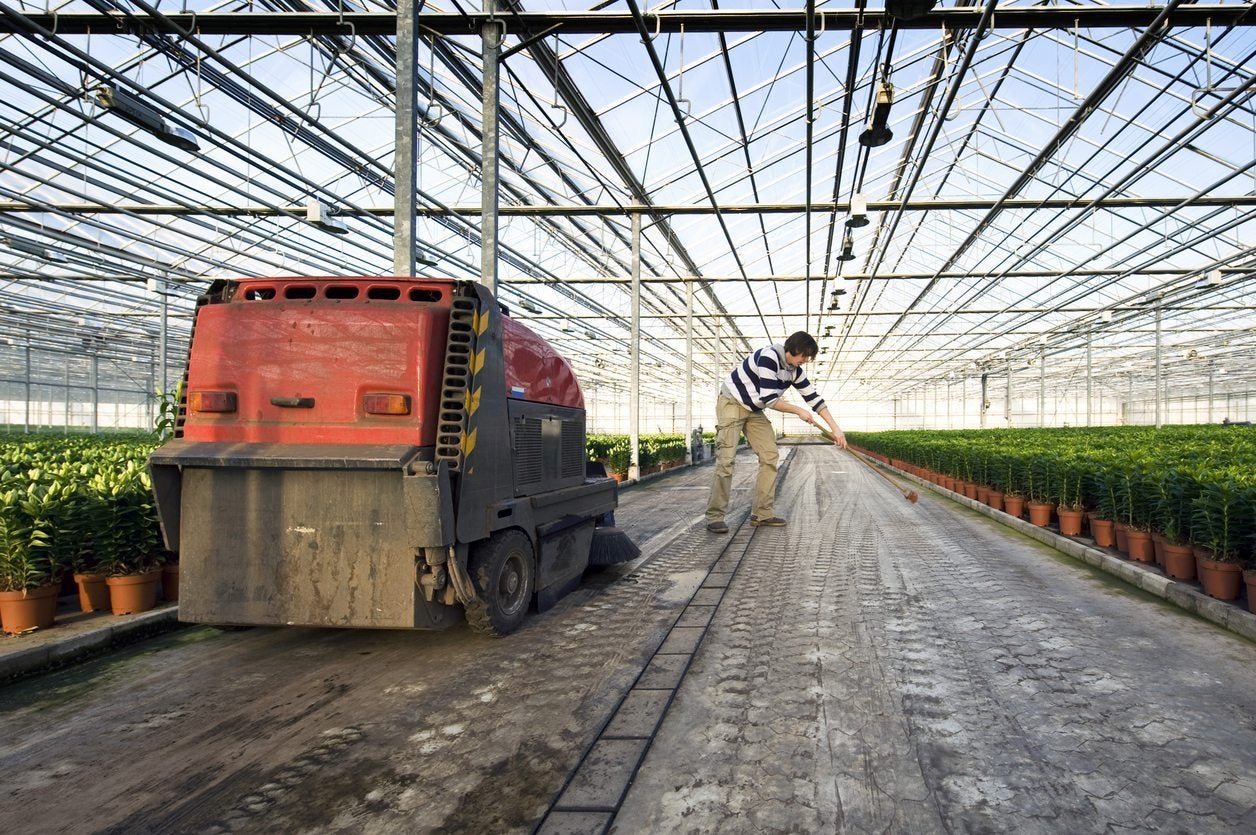
Greenhouses are fantastic tools for the home gardener but they do need to be maintained. If you’ve had issues with recurring disease or insect infestations, it’s time for a thorough greenhouse cleaning. Ideally, keeping a greenhouse clean should be an ongoing task, but as we all know, what we should do isn’t always what happens. So how do you sanitize a greenhouse? The following article contains everything you need to know about how to clean a greenhouse.
About Sanitizing a Greenhouse
Whether you are a commercial grower or a home grower, keeping the greenhouse clean is of paramount importance. Over the course of a growing season, plants aren’t the only thing that’s growing; potentially infectious microbes may be as well. Algae, too, are busy developing on moist surfaces that foster fungus gnats and shore flies. Prevention, as they say, is the best medicine and is the case here as well. It is easier and less expensive to nip insects and diseases in the bud by keeping a greenhouse clean. The cleaning and sanitizing of the greenhouse should occur as soon as possible to eradicate over-wintering pests prior to the growing season.
How to Clean a Greenhouse
Greenhouse cleaning is a two-part process: the initial cleaning and removal of items followed up with sanitizing the greenhouse. The actual cleaning out of the greenhouse means removing weeds and other living plant material from the greenhouse. Also, remove plant debris, spilled soil, and anything else that is cluttering the greenhouse. Once you have these items moved out of the way, use a shop vacuum to suck up wayward dirt, bits of broken pottery shards, etc. Either power wash or scrub algae, grime, and fertilizer residues. If you are using soap, be sure that it is a gentle, natural soap that leaves no residue. In the future, to make cleaning easier, the grower might wish to install weed barrier which will not only slow down weed growth, but make the cleaning of algae and spills an easier task.
How Do I Sanitize a Greenhouse?
There are four disinfectant methods used to sanitize a greenhouse.
- Alcohol– While 70 percent alcohol kills microbes on contact, it is volatile, so the results are short lived. It is best to use alcohol to sterilize equipment like shears or propagation knives.
- Bleach– Bleach is the most commonly used disinfectant and the cheapest. The thing about bleach is that it loses its efficacy after two hours of dilution. Dilution is the means by which the bleach is used as a disinfectant. It is not used straight but mixed with water in the amount of one part bleach to nine parts water. Prior to disinfecting pots or flats with bleach, wash out any soil or organic matter first.
- Hydrogen Dioxide– Hydrogen dioxide is another disinfectant that is available under brand names such as ZeroTol, OxiDate, and SaniDate. It kills many types of bacteria on contact and is good for use on benches, pots, tools, etc. Like bleach, it will lose its efficacy after a while. The solution can be tested to see if it is still potent. If not, additional hydrogen dioxide needs to be added.
- Quaternary Ammonium Chloride Salt– Unlike hydrogen dioxide or bleach, quaternary ammonium chloride salt does not lose its effectiveness. It is suited for use on pots, flats, etc., but they should be cleansed of any planting medium or other organic material first.
Keeping a Greenhouse Clean
It’s a big job so once the greenhouse has been sanitized, turn over a new leaf and resolve to take some steps to minimize future clean up. Be sure to sanitize tools, containers, and equipment right after use. Wash your hands prior to any contact with plants, equipment, or soils. Wash gardening gloves. Have a pair of shoes or boots that are strictly for use in the greenhouse and nowhere else. Avoid bright colored clothing, specifically yellow or blue, that attracts insects which may follow you into the greenhouse. Keep weeds pulled both in containers and off the floor. Remove any diseased plants immediately. Keep hoses hung nozzle end up instead of draping along the ground.
Sign up for the Gardening Know How newsletter today and receive a free copy of our e-book "How to Grow Delicious Tomatoes".

Amy Grant has been gardening for 30 years and writing for 15. A professional chef and caterer, Amy's area of expertise is culinary gardening.
